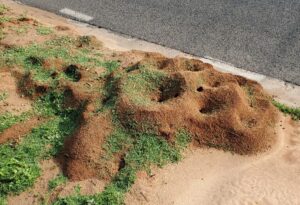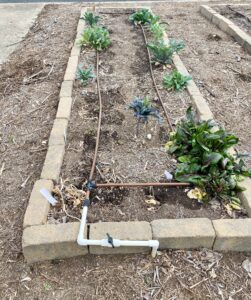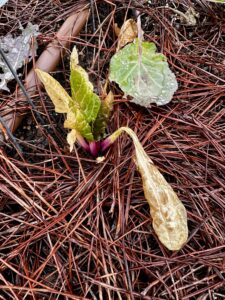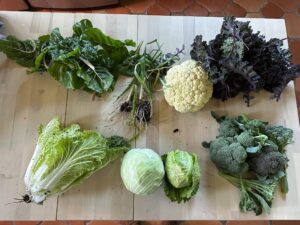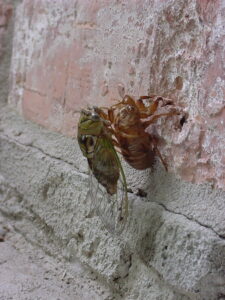
The Austin January Vegetable Garden Checklist by Paula Wolfel
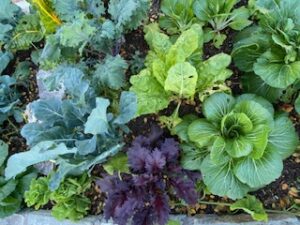
A selection of cool season, mustard, and Asian greens, collards, kale, chard, lettuces and arugula, and Chinese cabbage.
Many in Austin saw at least one freeze by early December. With that occurrence, I picked the last of my summer eggplants and made Pasta alla Norma and Eggplant Parmigiana (both can be stored in the freezer if you have a lot of eggplant) and I pickled my jalepenos. And with that is the end of my summer garden—except my chard—and magically space in the garden is free for more winter vegetables like greens, lettuces, brassicas (broccoli, cabbage, cauliflower, etc.), carrots, radishes, beets, or onions.
If you grow your vegetable plants by seed, then this is a great time to get your tomato, eggplant, and pepper plants started indoors for a March transplant into the outdoor garden. Also, keep an eye on the weather for low temperatures and make sure you protect any tender plants and take necessary steps to prevent irrigation pipes from freezing. This time of year you can reduce irrigation, especially if rain or snow is in the forecast. With lower temperatures and less hours of sun, the winter garden does not need as much water.
Finally, take advantage of the winter lull to take care of your tools.
Indoor Seed Starting
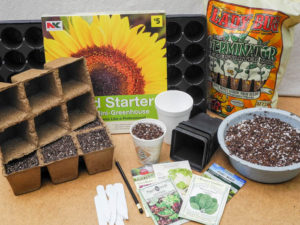
Growing transplants indoors allows you to experiement with diverse vegetable varieties.
Starting your seeds indoors gives you more control over your plants’ growing conditions and an opportunity to experiment with different vegetable varieties not sold as transplants in the local garden centers. It also gives you a head start on the planting season, especially for plants like tomatoes, peppers, and eggplants, which need to be put in the ground as transplants once it is warm enough—late February through March—and yet before high summer temperatures force them to bolt or stop setting fruit.
To start, gather your seed starting supplies: seeds, seed starting pots or cell trays (you can repurpose egg cartons, yogurt cups, old plastic plant pots from previous transplants-just make sure you wash them), plant markers, seed starting mix (homemade or store-bought), a seed tray with a humidity dome, and a spray bottle or squirt bottle filled with water.
Step One: Moisten your starting mix.
Dump your seed starting mix into a large bucket and add water. Stir so the mix is uniformly damp—you want it to be damp like wet sand but not soppy wet.
Step Two: Plant your seeds.
Next, fill your seedling pots with the pre-moistened seed starting mix. Then, place 1-2 seeds on the surface and gently press the seeds down to the depth recommended on the seed packet. Label each pot. And mist your seeds with water.
Step Three: Place in seed tray.
Assemble the pots in a seed tray (or a baking sheet) and cover with a humidity dome (or plastic wrap). Make sure the seeds are placed somewhere that is warm or on a seed starting heat mat. Mist your seeds whenever the soil feels dried out.
Step Four: Grow the seedlings.
Once the seeds germinate, and your seedlings start to emerge, they no longer need the humidity dome but they will need consistent light. Move the seedlings to the sunniest window in the house, preferably a south-facing window, or place your seedlings under grow lights. Continue to keep the mix moist, but not overly wet. They should be watered once a day or every other day, depending how much light and heat they get. Spray bottles or squirt bottles are great because they provide a gentle stream of water.
Step Five: Transplant into Larger Container
After your seedlings develop their first “true leaves,” they are ready to be transplanted. If you planted more than one seed, and more than one sprouted, choose the strongest one. Transplant the seedling into a larger container filled with potting mix. Be careful of the tender roots. Give the seedling plenty of access to grow lights or sunlight each day, preferably 12-16 hours.
Step Six: Harden off Seedlings
When you are about 2 weeks out from transplanting your plant into the ground, start prepping your seedling for the outside world, or harden off the seedling. First move it outside under diffused light for a few hours, bringing it back inside at night. Over the last week, move it from diffused sunlight to partial sun to full sun, and for longer periods of time, until its finally kept outside all night. After the hardening off period, you can transplant the vegetable to its permanent home, whether in a bed or a larger outdoor pot. At this point, you can give it liquid fertilizer like liquid seaweed with its first watering. Remember to water transplants daily for about the first two weeks in its permanent home to help establish strong roots. And finally, enjoy the fruits of your labor!
January Vegetable Garden Checklist
Here is what you can do in the garden this month:
FERTILIZE
|
- Fertilize established plantings of vegetables toward the beginning of the month by scratching in a solid fertilizer along the side of the plants. Be sure to water in. Alternatively, use a liquid formulation. Repeat in about two weeks.
|
WATER
|
- Irrigate only if the soil is dry a few inches below the surface, or in newly established seedbeds, or if you are not getting adequate rainfall. Plants use less water in cool weather so be careful not to overwater.
- Watch the weather forecast and water deeply before freezes because dry plants are more likely to suffer freeze damage than well-watered ones.
|
PLANTING (with frost protection)
|
- Seeds:
- Beets (middle to late month)
- Carrots (middle to late month)
- Fava Beans (all month)
- Greens, cool season (all month)
- Peas, English/now/snap (middle to late month)
- Radishes (all month)
- Turnips (middle to late month)
- Transplants:
- Artichokes (all month)
- Asparagus crowns (all month)
- Broccoli (middle to late month)
- Cabbage (middle to late month)
- Cauliflower (middle to late month)
- Leeks (middle to late month)
- Onions, bulbing (all month)
- Seeds or Transplants:
- Asian Greens (all month)
- Chard (middle to late month)
- Collards (all month)
- Kale (all month)
- Kohlrabi (all month)
- Lettuce (middle to late January)
- Mustard greens (all month)
- Spinach (middle to all month)
- Swiss Chard (all month)
- Indoors:
- Start tomato and pepper seeds indoor. I usually start transplanting mine in mid- to- late March.
- Potatoes get planted in mid-February but they need to be cut and set out to dry beforehand.
- Start shopping seeds for the February planting season.
|
SOIL
|
- If you’ve had a vegetable garden for a few years now, have a soil test done (forms available here). It’ll help you determine which amendments to add and what to avoid.
- Add 1-2 inches of organic matter like compost or aged manure, fallen leaves and pine straw to your empty beds so there is time for it to break down before spring planting.
|
DISEASES/PESTS TO LOOK FOR
|
- Cabbage loopers, aphids, snails/slugs, and some beetles can remain active all winter (control methods can be found here in the Grow Green Guides) You can hand pick them off and either squish or put into a cup of soapy water. Alternatively, Bt (Bacillus thuringiensis) is a safe way of eliminating the worms- just spray on the underside of the leaves where the moth lays the eggs.
|
MAINTENANCE
|
- Monitor weather forecasts for freeze warnings and protect tender vegetables by covering with row cover, sheets, or even a box. Be sure to remove each day when temperatures are above freezing.
- Keep up with weeds while they are young and before they have a chance to put down roots.
- Take advantage of mild winter days to tidy up your shed and greenhouse, and take care of tools.
- Keep up with the mulch (pine bark, hardwood mulch, pine straw, etc.)
|
HARVEST
|
- Keep your vegetable consumption high this winter as you continue to harvest Swiss chard, kale, collards and lettuce. Use a “cut and come again” strategy. You’ll be surprised how fast everything grows.
- Cut or twist the leafy tops off of turnips, beets, radishes and carrots before storing, and don’t overlook the culinary potential of those leafy greens. They are totally edible and nutritious, especially when harvested fresh from the garden. Their flavor is transformed when chopped up and incorporated into soups, casseroles, vegetable sautés, or dips. Carrot tops make a tasty pesto for adventurous eaters.
|
Additional Resources
Watch the Vegetable Gardening in Central Texas Webinar
Vegetable Planting Calendar (Español, 繁体中文)
Recommended Vegetable Varieties for Travis County
Vegetable Seed Sources
Easy Gardening Series Detailed tips from Texas A&M University AgriLife Extension on specific crops and practices.
Vegetable Gardening in Austin Resource hub for all things vegetables for Travis County
Plant Rotations, Successions and Intercropping
Monthly Gardening Calendar for Austin and Central Texas
Sustainable Food Center Farmers Markets
Texas Farmers Markets
Tool Maintenance
About Paula Wolfel
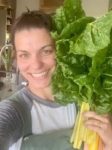 Paula Wolfel joined the Travis County Master Gardener program in 2022, but has been gardening in Austin, Texas since 2017. She grew up in the suburbs of Chicago learning how to garden from both her father—a Sicilian vegetable and fruit tree gardener—and both her grandmothers, and then spent years in Virginia gardening. Paula loves gardening because she finds it to be a grounding force- it gets her out of her head and into the present. She loves the pride that comes with cooking a meal for her family with every ingredient coming from her garden… and then the humility she feels when she loses an entire crop because of Mother Nature. She finds gardening to be wisdom, lessons, best practices passed down generation to generation, season to season and hopes to share that with you.
Paula Wolfel joined the Travis County Master Gardener program in 2022, but has been gardening in Austin, Texas since 2017. She grew up in the suburbs of Chicago learning how to garden from both her father—a Sicilian vegetable and fruit tree gardener—and both her grandmothers, and then spent years in Virginia gardening. Paula loves gardening because she finds it to be a grounding force- it gets her out of her head and into the present. She loves the pride that comes with cooking a meal for her family with every ingredient coming from her garden… and then the humility she feels when she loses an entire crop because of Mother Nature. She finds gardening to be wisdom, lessons, best practices passed down generation to generation, season to season and hopes to share that with you.

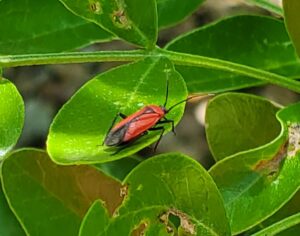 Mountain laurel mirids, Lopidea major, are relatively small insects that reach a little over ¼” as adults. Nymphs, or immatures, look like adults, but don’t have fully developed wings and are smaller in size. These mirids are a type of plant bug that is red and black in color. Bodies and front part of the wings are red while the head, antennae, legs, and back part of the wings are black.
Mountain laurel mirids, Lopidea major, are relatively small insects that reach a little over ¼” as adults. Nymphs, or immatures, look like adults, but don’t have fully developed wings and are smaller in size. These mirids are a type of plant bug that is red and black in color. Bodies and front part of the wings are red while the head, antennae, legs, and back part of the wings are black.

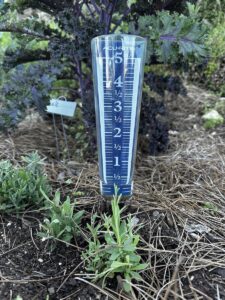
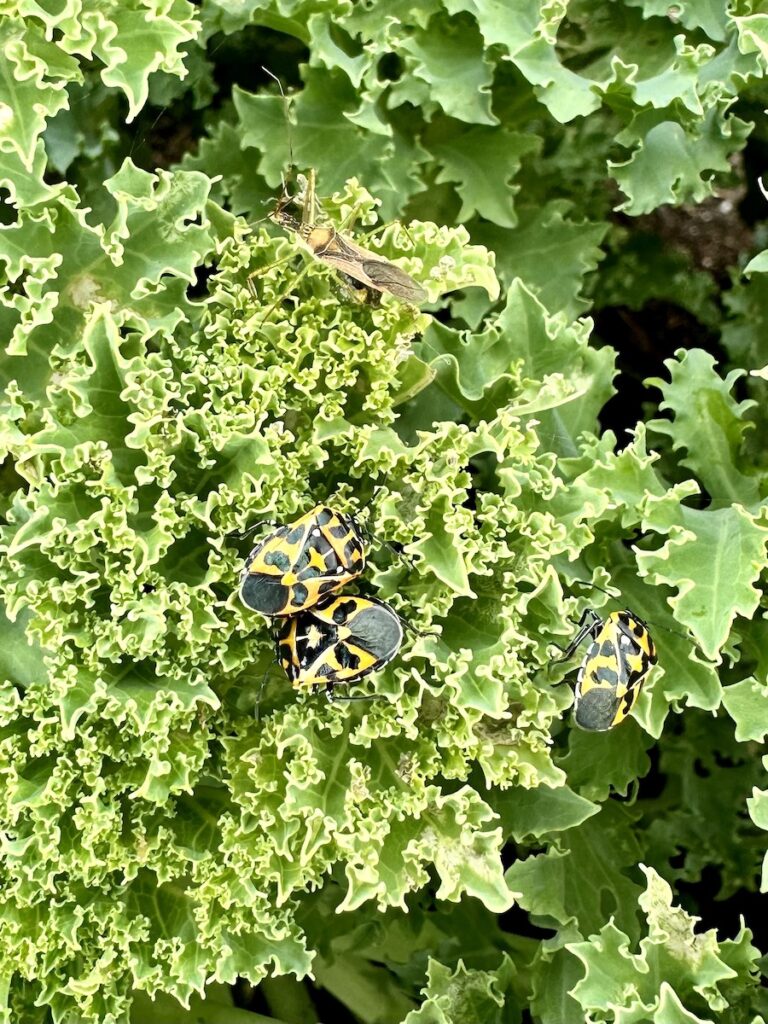
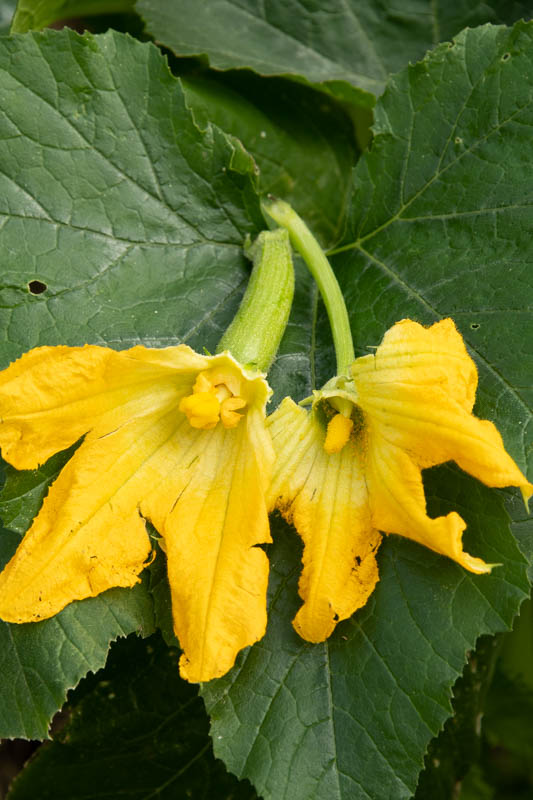
 Paula Wolfel joined the Travis County Master Gardener program in 2022 and has taken extra training to become a vegetable specialist. She grew up in the suburbs of Chicago learning how to garden from both her father—a Sicilian vegetable and fruit tree gardener—and both her grandmothers, and then spent years in Virginia gardening. Paula loves gardening because she finds it to be a grounding force- it gets her out of her head and into the present. She loves the pride that comes with cooking a meal for her family with every ingredient coming from her garden… and then the humility she feels when she loses an entire crop because of Mother Nature. She finds gardening to be wisdom, lessons, best practices passed down generation to generation, season to season and hopes to share that with you.
Paula Wolfel joined the Travis County Master Gardener program in 2022 and has taken extra training to become a vegetable specialist. She grew up in the suburbs of Chicago learning how to garden from both her father—a Sicilian vegetable and fruit tree gardener—and both her grandmothers, and then spent years in Virginia gardening. Paula loves gardening because she finds it to be a grounding force- it gets her out of her head and into the present. She loves the pride that comes with cooking a meal for her family with every ingredient coming from her garden… and then the humility she feels when she loses an entire crop because of Mother Nature. She finds gardening to be wisdom, lessons, best practices passed down generation to generation, season to season and hopes to share that with you.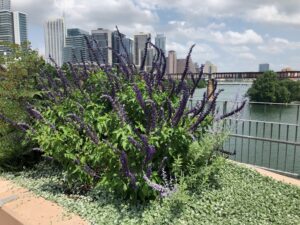 Texas Tough Plants for Austin
Texas Tough Plants for Austin Skip Richter and Denise Delaney started the series on February 21st. Their topics were Native & Adapted Plants for Central Texas and Wild About Plants, respectively.
Skip Richter and Denise Delaney started the series on February 21st. Their topics were Native & Adapted Plants for Central Texas and Wild About Plants, respectively. On March 20th John Davis, Conservation Program Coordinator with the Austin Parks and Recreation Department gave an excellent presentation on why and how to make our gardens more beneficial for wildlife.
On March 20th John Davis, Conservation Program Coordinator with the Austin Parks and Recreation Department gave an excellent presentation on why and how to make our gardens more beneficial for wildlife. Yvonne Schneider, Travis County Master Gardener and Advanced Master Gardener – Tree Care, was our featured speaker on April 10th.
Yvonne Schneider, Travis County Master Gardener and Advanced Master Gardener – Tree Care, was our featured speaker on April 10th. Not everyone has a yard or plot to garden in. Plant selection is just as important if you grow plants in containers. Kirk Walden, Travis County Master Gardener, was our final session on May 8th.
Not everyone has a yard or plot to garden in. Plant selection is just as important if you grow plants in containers. Kirk Walden, Travis County Master Gardener, was our final session on May 8th.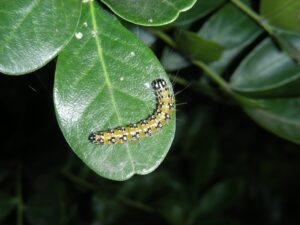 Caterpillars on your Mountain Laurel?
Caterpillars on your Mountain Laurel?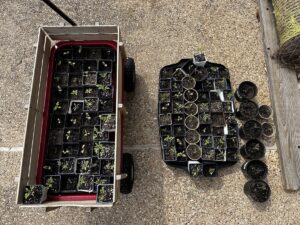
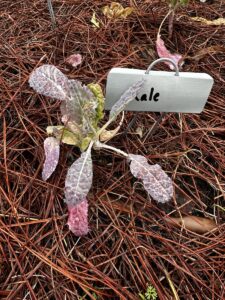
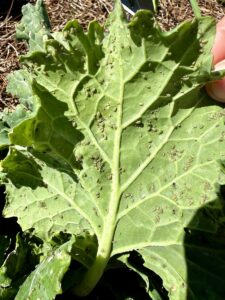
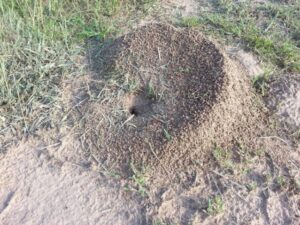 Large Mounds Made by Leafcutting Ants Too
Large Mounds Made by Leafcutting Ants Too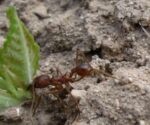 Leafcutting ants typically forage when temperatures are cooler, such as at night or in the morning. They can sometimes cause complete defoliation of plants or small trees overnight. These ants remove leaves and buds from plants in the landscape which they chew and get some nutrition from sap, but mainly place chewed leaves in an underground garden within their colony and use it as a base to grow fungus that they eat. Leafcutting ants tend a particular species of fungus and weed out any other fungus from their garden.
Leafcutting ants typically forage when temperatures are cooler, such as at night or in the morning. They can sometimes cause complete defoliation of plants or small trees overnight. These ants remove leaves and buds from plants in the landscape which they chew and get some nutrition from sap, but mainly place chewed leaves in an underground garden within their colony and use it as a base to grow fungus that they eat. Leafcutting ants tend a particular species of fungus and weed out any other fungus from their garden.